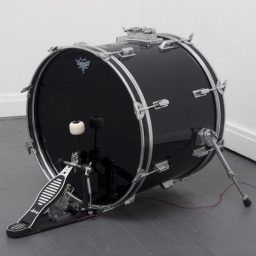Unfortunately I can't include images in the track description or comments (or I don't know how to do it). Then I could show the frequency spectrum of the kick drum sample before and after processing. But you can insert a Curve device after the Machiniste and activate Spectrum display to have an idea of what's going on.

By applying a high pass filter to a kick drum sample and adding a small amount of resonance to the filter, we can both remove unwanted low frequencies from the kick sound and add low end power to it.
The first two bars play the original kick drum sample and the next two bars play the processed one. Here's how the method works:
• We load a kick drum sample in the Machiniste. It peaks at -3 dB (as attenuated by the Master Output).
• The sample has a fundamental frequency of G1≅49 Hz. It also has a considerable amount of frequencies below the fundamental.
• We apply Machiniste's filter in high pass mode and set the cutoff frequency to 49 Hz. This cleans the low end and provides a bit more than 1 dB of extra headroom.
• We set the filter's resonance to 7%. This boosts the fundamental frequency of the kick drum sample and makes up for the lost level.
• The processed sample peaks again at -3 dB and has very little low end below the fundamental frequency, sounding cleaner.
Note: This method doesn't work with all kick drums. Depending on the frequency make-up of the original sound, high pass filtering it might actually increase its peak level. It tends to work better with kicks possessing a lot of low end below their fundamental frequency.
3 Comments
Create an account or Login to write a comment.
